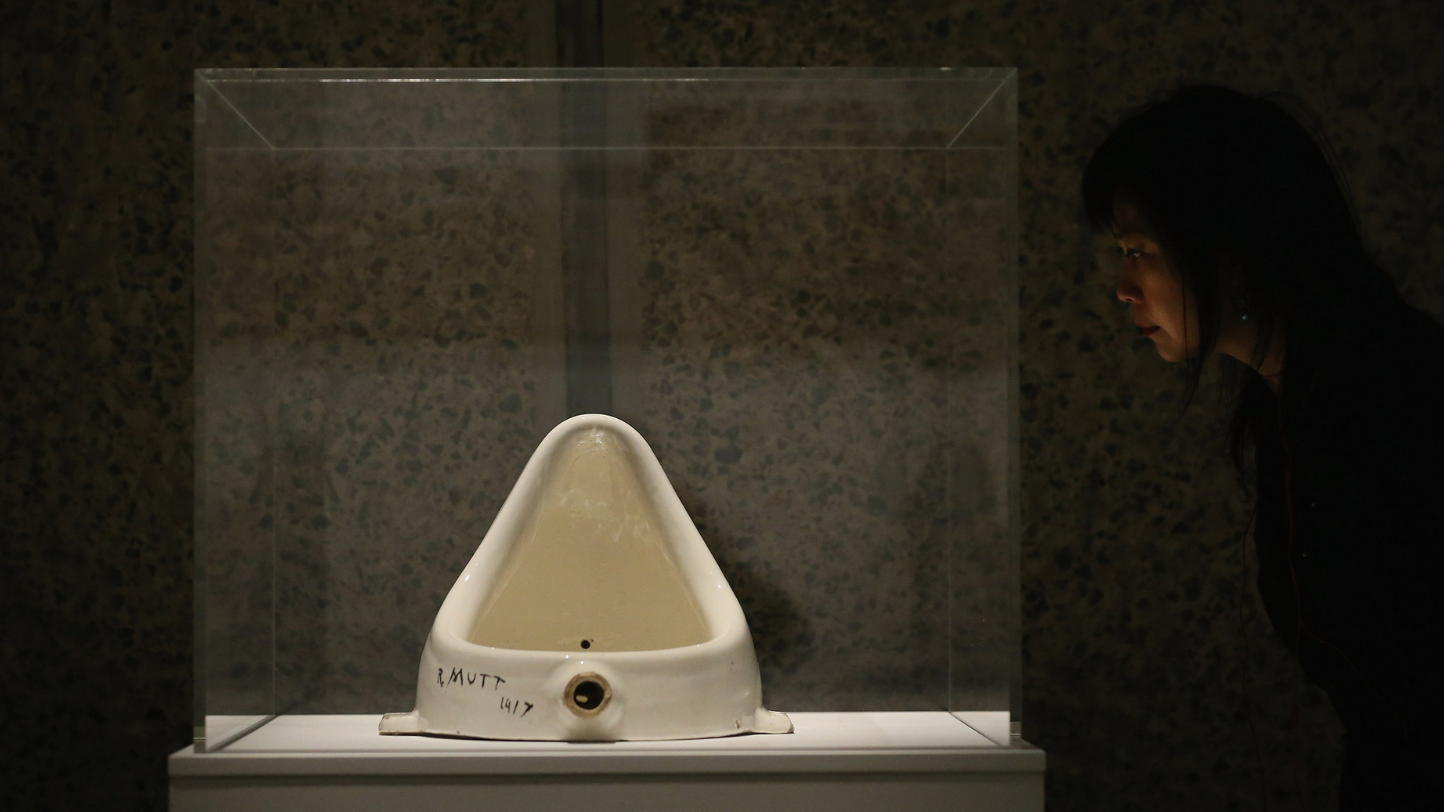
On toilet day we talk about a legend in the history of art: The Fountain by Marcel Duchamp. In 1917, the hall of the Society of Independent Artists of New York, claimed that it would accept any work of art as long as the artist paid the entry fee. Thus began the legend of this story that forever marked Contemporary Art and the way we see and analyze Art until today. How supposedlyO salon of the Society of Independent Artists accepted any work, Marcel Duchamp sent an upside down urinal signed and dated “R. Mutt, 1917” and titled fountain,as a way of provoking and questioning the terms of acceptance of the event committee. (The artist later explained that the idea for Fountain came from a discussion with collector Walter Arensberg and artist Joseph Stella in New York.)
When this object was received it provoked a great discussion betweenthe members of the hallNew York Society of Independent Artists. Aafter a vote, the directors present during the show's installation at the Grand Central Palace (about ten of them, according to a report in the New York Herald) decided in strict name of the board to exclude the play's entry. fountain of the inaugural exhibition, opened to the public on April 10, 1917.The Society's board thought the piece was a joke by an anonymous artist and rejected it on the grounds: it is not a true work of art. Marcel Duchamp and Arensberg, also members of the council, protested the decision and effectively said that the council was censoring an artist's work of art.

It is important to note that it was not publicly known that Marcel Duchamp was the creator of Source, although some of his closest friends (such as Walter Arensberg) knew of his involvement, and many others were suspicious. Later, the artist explained that he did not reveal his identity because of his position on the Society's council and in order not to interfere in the opinion of the members. The fact that 'R. Mutt' being an unknown artist opened up the possibility for Marcel Duchamp to test society's openness to works of art that did not conform to conventional aesthetic and moral standards, without compromising the outcome or his relationships with board members."R. Mutt" is an unusual name, with comic connotations, and Marcel Duchamp was asked several times about its meaning and whether it was connected to the German word Armut, which means poverty. Marcel Duchamp explained:
“Mutt comes from Mott Works, the name of a large sanitary equipment manufacturer. But Mott was too close so I altered it to Mutt, after the daily cartoon strip “Mutt and Jeff” which appeared at the time, and with which everyone was familiar. Thus, from the start, there was an interplay of Mutt: a fat little funny man, and Jeff: a tall thin man ... I wanted any old name. And I added Richard [French slang for money-bags]. That's not a bad name for a pissotière. Get it? The opposite of poverty. But not even that much, just R. MUTT.”

How did Marcel Duchamp change the art world with Readymades?
The creation and presentation of this piece can be seen as the artist's experiment in testing the new American Society's commitment to free speech and its tolerance of new conceptions of art.Anyone familiar with the artist's work knows that he created “readymades” - objects removed from their natural function and modified or recontextualized to belong to an artistic aesthetic. The readymades depart from the concept of art that Marcel Duchamp had, about valuing the idea of a work of art, rather than the object itself. This intellectually captivating and challenging concept has become indispensable to all art created during the 20th century to the present day. As the artwork was later lost (and had been seen by very few people), Stieglitz's photograph, which according to a letter had been taken on April 19, 1917, became the key document in the record of the fountain.

After showing, fountain it was only publicly discussed in the art world again in 1934, in an article by the leader of the surrealist movement André Breton. In this pioneering article on Marcel Duchamp's artistic career, both fountain as the remaining readymades created are strongly mentioned. So, the fountain and the readymades became for countless artists the starting point for the idea of art as a concept. In addition, they questioned the very definition of art by raising several pertinent questions such as: What is a work of art? Who decides, the artist or the critic? Can a work derive only from an idea or does it require the hand of the creator?extensively studied, fountain offered an extraordinary narrative in art, by questioning the structures of belief about art, the role of taste and value associated with the concept of art. In an interview in 1964, Marcel Duchamp mentioned that he chose this object because he thought it had less chance of being appreciated (although many at the time considered it aesthetically pleasing).In the 1060s, Marcel Duchamp created 17 copies that are currently on display in various museums.

“I was drawing people's attention to the fact that art is a mirage. A mirage, exactly like an oasis appears in the desert. It is very beautiful until, of course, you are dying of thirst. But you don't die in the field of art. The mirage is solid.”
